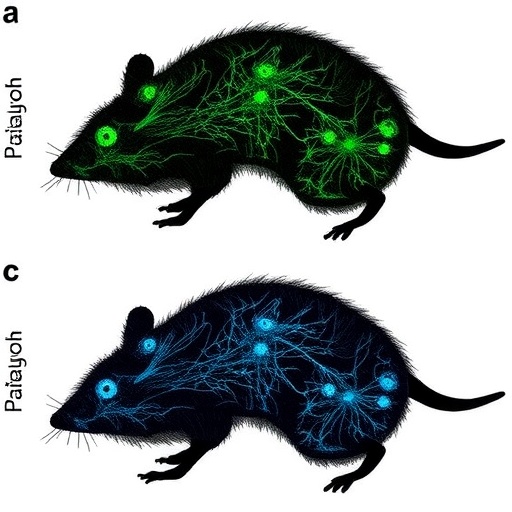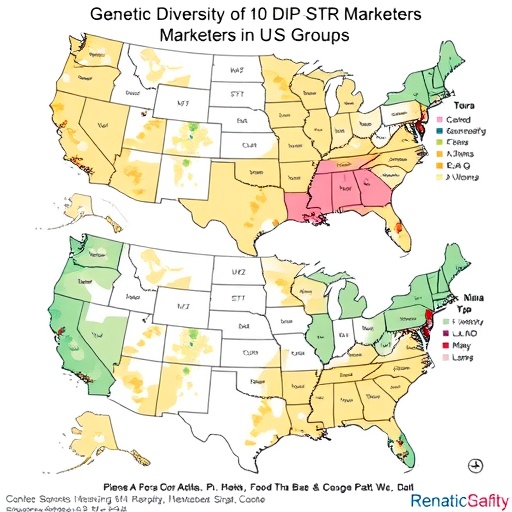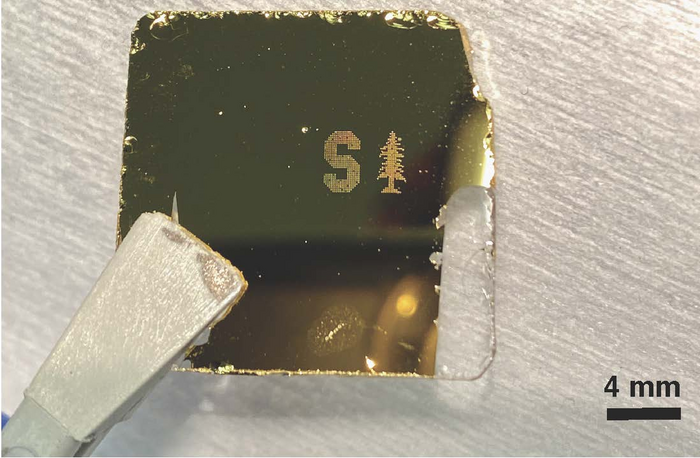
In a groundbreaking study published in Nature Neuroscience, researchers have unveiled the intricate temporal dynamics governing the development of GABAergic neurons in the mouse brain. This research illuminates how the competency of neural progenitor cells—a critical factor dictating the ability of these cells to generate specific neuron types—shapes the maturation process of inhibitory circuits central to brain function and health. The findings offer transformative insights into neurodevelopment, potentially paving the way for therapeutic interventions in neurodevelopmental disorders and diseases rooted in the dysfunction of inhibitory interneurons.
From the earliest stages of embryogenesis, the brain embarks on a highly choreographed journey of cellular differentiation. Neural progenitor cells undergo fate decisions, proliferation, and maturation, giving rise to diverse neuronal populations. Among these, GABAergic neurons stand out due to their pivotal role in modulating excitatory activity, ensuring neural circuit balance, and maintaining network stability. Yet, despite their importance, the exact temporal parameters dictating when and how progenitors commit to becoming GABAergic neurons have long remained elusive.
The team led by Bright, Kotlyarenko, Neuhaus, and colleagues employed advanced genetic lineage tracing combined with single-cell transcriptomics and time-resolved functional assays to dissect progenitor competence over developmental time windows. By meticulously mapping gene expression trajectories, they revealed that progenitor cells exhibit a transient window during which they are competent to produce GABAergic neurons. This competency is not static but dynamically regulated, linked to a precise temporal code that ensures appropriate neuron subtype specification and circuit assembly.
.adsslot_ejyai43NkQ{width:728px !important;height:90px !important;}
@media(max-width:1199px){ .adsslot_ejyai43NkQ{width:468px !important;height:60px !important;}
}
@media(max-width:767px){ .adsslot_ejyai43NkQ{width:320px !important;height:50px !important;}
}
ADVERTISEMENT
What emerges is a model where progenitor cells’ intrinsic timing mechanisms intersect with extrinsic cues from their microenvironment to trigger irreversible commitment to inhibitory neuron fate. The study shows that this temporal control is orchestrated by a tightly regulated network of transcription factors and signaling pathways. Fluctuations in these molecular players can shift the competency window, affecting both the quantity and quality of GABAergic neurons produced.
Moreover, the researchers demonstrated that disrupting the timing of progenitor competence through genetic manipulation leads to aberrant maturation of inhibitory neurons. Such perturbations resulted in altered synaptic integration and impaired inhibitory circuit function, highlighting the functional consequences of temporal misregulation in neural development. These findings underscore the delicate balance maintained within neural progenitors to ensure the formation of precise inhibitory circuits.
Another remarkable aspect of this study is the identification of a molecular “timer” embedded within progenitor cells, modulating their developmental potential over time. This timer integrates signals from the Notch and Sonic Hedgehog pathways, among others, modulating the expression of key transcription factors such as Nkx2.1 and Lhx6, which are instrumental in GABAergic neuron specification. The interplay between these pathways fine-tunes progenitor fate decisions in a temporal manner that had not been previously appreciated with such clarity.
The implications of temporal control over progenitor competence extend beyond normal development. Many neurological conditions, including epilepsy, schizophrenia, and autism spectrum disorders, have been linked to dysfunction in GABAergic interneurons. By defining the developmental parameters shaping these neurons, the study provides a foundational framework to understand how temporal disruptions might contribute to disease pathogenesis and offers potential windows for intervention during critical periods.
Technological advances played a crucial role in these discoveries. The authors leveraged cutting-edge single-cell RNA sequencing to capture molecular snapshots of progenitors at various developmental stages. This allowed for the construction of a detailed timeline of gene regulatory changes aligned with shifts in progenitor competence. Coupled with lineage tracing techniques, this enabled the direct linking of transcriptional profiles to eventual fates, building a comprehensive developmental atlas for GABAergic neuron genesis.
Further, the research explored how extrinsic factors modulate progenitor timing. The external environment within the developing brain, including gradients of morphogens and cell-cell interactions, was shown to influence the closure of the progenitor competency window. This highlights a sophisticated multi-layered regulatory system where intrinsic programs are subject to modulation by local signaling landscapes, ensuring temporal precision and adaptability.
Intriguingly, the study also uncovered heterogeneity within progenitor pools. Not all progenitors adhere to the same competency timeline; instead, subpopulations demonstrate staggered windows of potential to generate distinct subclasses of GABAergic neurons. This layered temporal structuring supports the generation of interneuron diversity necessary for complex circuit functions, hinting at an evolutionary strategy to optimize inhibitory circuitry.
Preclinical models generated during the study revealed that manipulating the timing signals can rescue deficits caused by premature or delayed progenitor competence closure. This holds promise for therapeutic approaches that could recalibrate developmental timing in disorders characterized by interneuron deficits. Targeting specific molecular regulators of the progenitor timer system emerges as a potential avenue for restoring balanced inhibitory networks.
The researchers also discuss the broader context of their findings within cortical development. The integration of temporal progenitor dynamics with spatial patterning signals contributes to a comprehensive understanding of brain organization. It challenges the traditional deterministic views of neuron fate specification, incorporating a temporal layer that adds plasticity and robustness to developmental programs.
While this work provides significant advances, it also opens new questions about how temporal control mechanisms interact with epigenetic regulation, metabolic states, and neural activity patterns during development. These dimensions could further refine progenitor competence and neuronal maturation, presenting fertile ground for future investigations.
Beyond neuroscience, the concept of temporal coordination of progenitor competence might be a universal principle applicable to other organ systems, where progenitor cells generate diverse cell types in defined sequences. This underlines the fundamental biological importance of timing in development, with implications for regenerative medicine and stem cell biology.
In conclusion, the findings of Bright et al. redefine how we conceptualize the generation of GABAergic neurons by placing temporal control of progenitor competence at the forefront of neurodevelopmental processes. This paradigm shift enhances our molecular and cellular understanding of inhibitory circuit formation, offering promising vistas for addressing neurological diseases linked to interneuron dysfunction. As temporal precision emerges as a critical neurodevelopmental axis, the potential to manipulate progenitor timing to promote brain repair or optimize neuronal diversity beckons as an exciting frontier in neuroscience research.
Subject of Research: Developmental timing and progenitor competence in GABAergic neuron maturation in mice
Article Title: Temporal control of progenitor competence shapes maturation in GABAergic neuron development in mice
Article References:
Bright, A.R., Kotlyarenko, Y., Neuhaus, F. et al. Temporal control of progenitor competence shapes maturation in GABAergic neuron development in mice. Nat Neurosci (2025). https://doi.org/10.1038/s41593-025-01999-y
Keywords: GABAergic neurons, progenitor competence, neural development, temporal control, transcription factors, inhibitory circuits, interneuron maturation, developmental neurobiology
Tags: advanced genetic lineage tracing techniquescellular differentiation in the brainexcitatory-inhibitory balance in neural circuitsGABAergic neuron differentiationgene expression in neurogenesisinhibitory circuit maturationmouse GABA neuron maturationneural progenitor cell competenceneurodevelopmental disorders researchsingle-cell transcriptomics in neurosciencetemporal dynamics of neural developmenttherapeutic interventions for brain disorders






